IN DEPTH: At least 100 people have left the Netherlands to fight in Syria. In neighbouring Belgium, the number is even higher. Family members and researchers point to the Belgian group Shariah4Belgium as part of the explanation.
Øyvind Strømmen
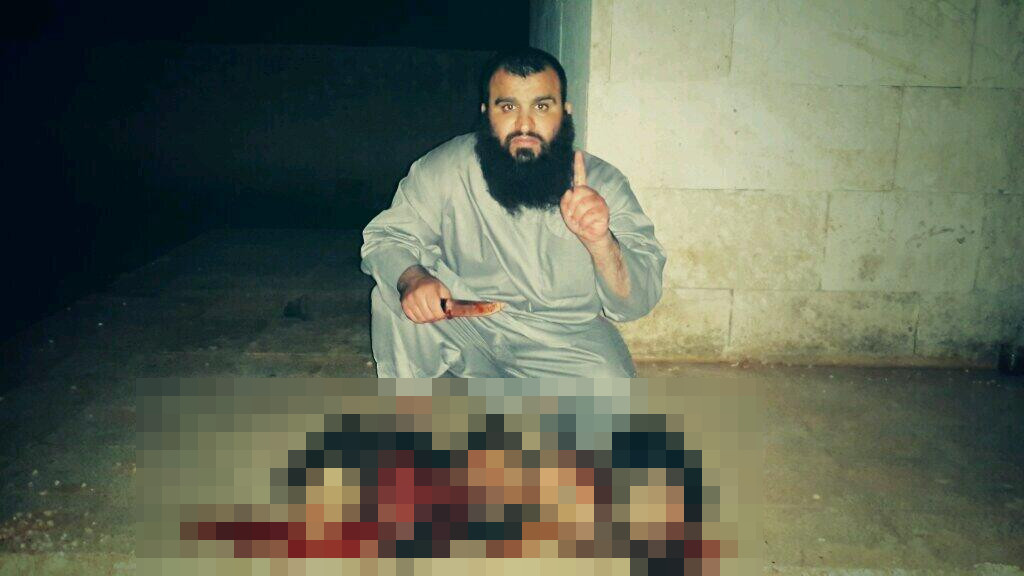
A picture allegedly showing Khalid K. with five severed heads. The picture, originally shared on Twitter, has been pixelated by HSI.
Almere is the youngest city in the Netherlands; its first house was built in the mid-1970s. Formerly a patch of water in the Zuidersee, it is now one of the most populous municipalities in the Netherlands and an example of how the Dutch have reclaimed the sea. Almere is a modern place and – to quote the municipality’s official website – a place “where innovations can thrive, which is essentially what the new town character of Almere is all about”.
Until a couple of years back it was also the home of a man referred to only as Khalid K. in the Dutch press. Khalid, now 37, lived for about 10 years in the Netherlands. According to the leading newspaper Volkskrant, he was deemed unfit for work and received medication to treat schizophrenia and claustrophobia. The journalist Harald Doornbos reports on his blog that Khalid K. was arrested in 2011 on suspicion of having connections to terrorism. The case against him was soon dismissed due to a lack of evidence.
By all appearances Khalid K. then went to Syria, originally fighting with the al Qaeda-linked group Jabhat al-Nusra. Now, he allegedly fights with the rival jihadist group ISIS (the Islamic State of Iraq and ash-Sham). Recently the image above was released on the Internet, showing Khalid K. posing with the heads of five decapitated victims, said to be fighters belonging to his former allies in Jabhat al-Nusra. It is notoriously difficult to evaluate the authenticity of such imagery, Khalid K.’s texts on the Internet leave little doubt that he seeks to portray himself as a dedicated jihadist, and there are strong indications that this is the very same man arrested in the Netherlands in 2011.
Thus, Khalid K. has become a symbol not only of the cruelty of the Syrian civil war, or of the crimes of jihadist groups, but also of the several hundred – possibly several thousand – jihadists who have travelled from European countries to fight against Assad’s regime in favour of a religiously rigid, authoritarian, politicized and revolutionary form of Islam, Salafi jihadism. That said, he might not be a very typical example.
100 “polderjihadisten”
An estimated 100 jihadists have left the Netherlands alone, according to a February 2014 report by the Dutch national coordinator for anti-terrorism and security. Around of 70 of these “polderjihadisten” are still in Syria, while at least 11 of them have been killed in Syria and about 20 have returned to the Netherlands. In addition, young fighters with a Dutch background are also believed to be taking part in armed groups in Egypt, Yemen, Somalia and the Afghan-Pakistani border areas.
Many of those who head to Syria are in their early 20s, some are still teenagers. Amongst them are also several that are under 18; the police have reported nine such cases in the The Hague region alone.
Many have a Moroccan background, some belong to other Muslim diaspora groups, and still others are Dutch converts.
A man in the third category, one who remains in Syria, is Zakariya al-Hollandi, formerly Victor Droste, an alleged volunteer in Jabhat al-Nusra. He grew up in the village of Heeten, a municipality of about 4,500 people in the Overijssel province. It is a rather typical Dutch village, with a small stone church built in the late 19th century, a spacious market square which also serves as a parking lot, a few shops, pubs and cafeterias. Droste grew up a couple of hundred metres from the village square, the Dorpsplein, his father working for the municipality, his mother within health care. It seems an unlikely place for a jihadist to grow up.
In late January, the journalist Nikki Sterkenburg looked back at Droste’s road to jihadism in the weekly Elsevier. It is a disturbing tale of a reserved youngster who lived at home and worked as a postman, a boy who liked to party, but who struggled with his own identity, with finding purpose. In 2010, he converted to Islam. The following year – while trying to learn more about his adapted religion via the Internet – he became interested in the British Salafist movement Islam4UK, led by Anjem Choudary and proscribed under Britain’s counter-terrorism laws in January that year. Soon, Droste also got in touch with Islam4UK’s Dutch counterpart, Shariah4Holland. When they arranged a conference visited by the renowned Choudary, Droste was in the audience. He introduced himself as Zakariya al-Hollandi.
During the conference the young Dutchman was invited to join a radical group in The Hague, which he did. There he followed lectures and listened to recorded speeches by the militant Islamist leader Anwar al-Awlaki, the Yemeni-American al Qaeda ideologist who was killed in a drone strike in Yemen in late September 2011, and who has been described as “the bin Laden of the Internet”.
Around Christmas, after a row with his parents, he left home, staying with friends and sometimes sleeping in mosques. Then he left for Syria.
The Arnhem jihadists
About 60 km southwest of Heeten – near the German border – is the industrial city of Arnhem. Internationally, it is probably best known for the Battle of Arnhem, which took place in September 1944, when the Allies met strong German resistance in their move northwards from Belgium.
Amongst medium-sized Dutch cities, Arnhem has one of the highest proportions of immigrants, with considerable Turkish and Moroccan communities. At least 10 young men from Arnhem have left for Syria. These include Marouane B. and Robbin van D. from the Malburgen district, two best friends whose story the Dutch newspaper NRC Handelsblad has looked into. Marouane is of Moroccan background while Robbin is “autochtoon”, or ethnically Dutch. For years, their hobby was rapping. In 2011, Marouane B. posted a video on YouTube, rapping about Malburgen, about girls, about sex.
It was only last year that they both became active Muslims. Their rap lyrics changed, too. In July, they took part in a video released by the group “Team Liefde”, or the Love Team. It is a cheerful, enjoyable song about Ramadan, “the month of love and togetherness”, ending with the rappers walking down a street draped in their various national flags. The video wraps up with Robbin onscreen, a Dutch flag over his shoulders.
According to NRC Handelsblad, the two youngsters took Arabic lessons arranged by the local association Omar Al Khattab, run by Anoire Rharsisse, who told the newspaper he finds it “abnormal” to travel to another country to fight “just like that”. The newspaper found that his Facebook profile, under another name – Aboe Nusaybah – tells quite a different tale. It says there that jihad fighters are necessary everywhere “from America to China”, as Muslims are physically and spiritually persecuted all over the world.
The two young men began spending time watching videos and photographs from Syria, including images of victims of the gruesome gas attack against the Ghouta suburbs of Damascus in August last year and videos showing distraught children talking about their murdered families. An older friend of theirs, Nadeem, had already left for the country. Another friend, Hakim, tried to follow, but was stopped by German police. Marouane and Robbin delved into books and Internet sites on holy war. Amongst the books they read was one written by Abu Muhammad al Maqdisi – a prominent Salafi jihadist writer often considered the spiritual mentor of the late Jordanian terrorist Abu Musab al-Zarqawi. The websites they visited included the Dutch-language site “De Ware Religie” (The True Religion), a Salafist-oriented site with close contacts to Syrian civil war volunteers from the Netherlands. On the Internet they also found lectures given by Fouad Belkacem, the leader of Shariah4Belgium, another group related to Anjem Choudary’s Islam4Uk.
Eventually Marouane and Robbin became convinced that they would be weaklings if they remained in the Netherlands instead of helping their fellow Muslims in Syria. They became increasingly strict in their religious lives and read increasingly extreme literature, such as speeches by Anwar al-Awliki and a book by Abdullah Azzam, as Palestinian Islamic scholar who organized Arab volunteers in the Afghan mujahedeen war against the Soviets and who also taught and mentored Osama bin Laden.
In less than a year, the two embraced jihadist ideology. In November, they left for Syria, travelling first to Turkey. Shortly before leaving Robbin posted new rap lyrics on Facebook. As translated to English: “Are we rather in the clubs, dancing like a ballerina? We commit so much zina (i.e sexual intercourse outside of marriage), but do not care about Palestine. […] So much pride in the Dutch flag, the Turkish or Moroccan, but who dares to carry the flag of Islam?”
From Syria, Marouane sent a picture of himself to friends in Arnhem. He held an AK-47 Kalashnikov in his hands and encouraged his friends to come. Robbin van D. has recently returned from Syria, after four months in Aleppo, fleeing from the infighting between jihadist groups. He has been interviewed by the police, and has been offered psychological help from the municipality. Thus far, he has not spoken to the press.
The “pyjamahideen”
To a certain degree, the story of Marouane and Robbin is a story about what has been called “jihobbyism” or the “pyjamahideen”.
The former term was introduced by the researcher Jarret Brachman in his 2008 book Global Jihadism: Theory and Practice, where he describes “enthusiasts of the global Jihadist ideology […] who emerge without direct assistance, training or support from any official al-Qaeda element”:
Some call them “self-starters”, others refer to them as practitioners of “home-grown terrorism.” Crucially, they come to the movement of their own volition. They may be guided by teachers, friends, mentors, or religious figures, but they largely drive their own radicalization.
However, it is also a story about the end of jihobbyism. While many limit themselves to flirting with al Qaeda symbolism and extreme ideology – as others flirt with Nazi imagery – a considerable number of young Europeans have left for Syria to become real jihadists. In the self-driven radicalization process the Internet often plays a central role.
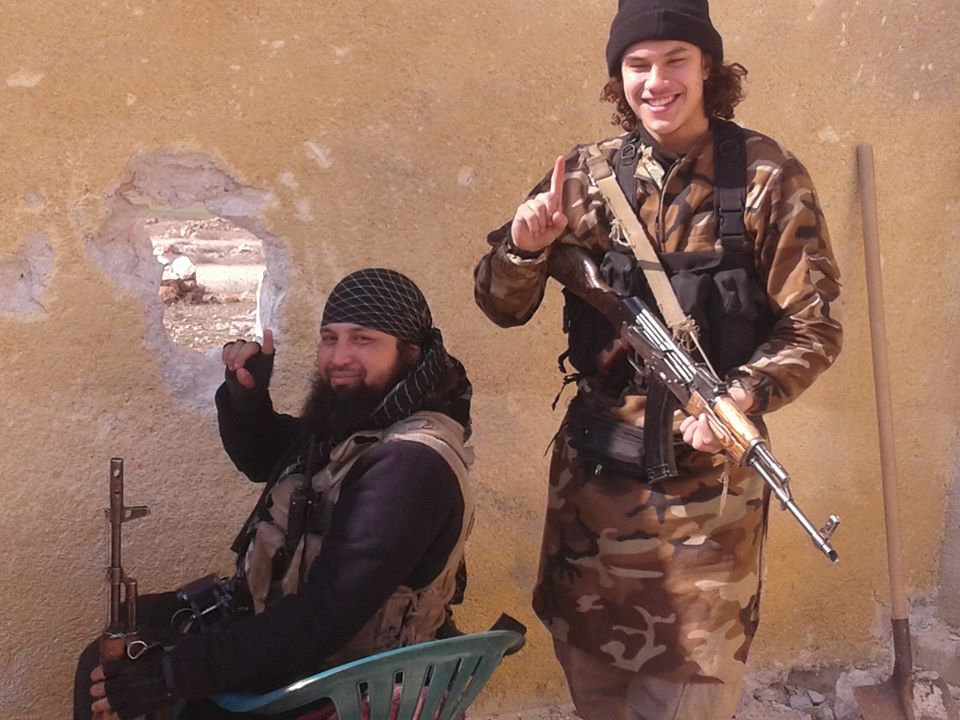
Brian De Mulder (right), with Hicham Chaib, a key member of Shariah4Belgium, who is also currently in Syria. The picture was posted on Chaib’s Facebook page.
From the Fields of Flanders
Another case in point seems to be that of Brian De Mulder, also known as Abu Qasem Brazili, one the Belgian jihadist fighters who has received the most attention. De Mulder is a young man from Antwerp, the second-most populous city in the country and the largest city in the Dutch-speaking region, Flanders.
His story seems familiar by now. A few years back he dreamed of becoming a professional footballer – he was a talented attacker, and sought a career within the sport. At 17, however, he was dropped from the roster of his local club, which was strapped for cash. Shortly thereafter he started playing indoor football with a group of teenagers of Moroccan background.
The Belgian-Brazilian was raised a Catholic but took interest in the religion of his friends, and converted to Islam. With the zeal of a convert, he soon started complaining about other Muslims, telling them that they were not pious enough. In mid-2011 he began snubbing non-Muslim friends. At the same time, he was introduced to street sermons held by the previously mentioned Fouad Belkacem of Shariah4Belgium. In an interview with TIME Magazine, an aunt, Ingrid De Mulder, claims that Belkacem indoctrinated Brian, turning him from a normal teenager with “a golden heart” to “a programmed robot”. However, De Mulder was also active on the Internet. In a comment posted under a YouTube video, he wrote:
God has created us, thus He knows what is best for us. He has given [us] a user manual, […] sometimes a technician is necessary, [someone who] explains the user manual in a clearer way, to understand how it needs to be followed. These are the prophets, and the user manual is the Quran […]. If you buy a TV or a cabinet or whatever, you will receive a user manual, which says what you should do […]. It is logical to follow the user manual, because the creator knows his product better than you. He has created. If you do not follow the user manual, you risk breaking stuff or assembling it wrongly; it is the same way with humans.
There is more to the story. In early January, De Mulder was convicted – in absentia – of drug dealing. In the summer of 2012, De Mulder and another young man had been caught by the police selling cocaine to a customer. A half year later, in mid-January 2013, he left his family, telling his younger sister: “I love you, but you will never meet me again.” A few days later he took a flight from Düsseldorf to Istanbul, then travelled on to Syria.
He is not the only Belgian jihadist with a seemingly unlikely background. Another is 18-year old Jejoen Bontinck. Bontinck was raised Catholic, living with his Belgian father and Nigerian mother in Antwerp. In interviews his father Dimitri – like De Mulder’s aunt – points the finger at Shariah4Belgium. In an interview with Nieuwsblad, Dimitri Botinck says his son was brainwashed by the organization, and specifically by Fouad Belkacem. The son eventually left Belgium, claiming that he was going to study in Cairo but actually going to Syria. His father followed to Syria, trying to find him.
Bontinck returned from Syria last fall, and vehemently denied having taken part in fighting, in spite of tips that he had been involved with ISIS. He was arrested on suspicion of belonging to a terrorist group. Later he apparently cooperated with security services, testifying against former comrades and saying he no longer supports ISIS. Late last year he was released. He subsequently received threats from Shariah4Belgium supporters.
Like the others mentioned above, De Mulder and Bontinck can be said to fit what TIME Magazine describes as “the classic type of fundamentalist convert: Vulnerable and impressionable teenagers or college-aged men who become disaffected, feel marginalized, experience discrimination or have difficulties assimilating into society”.
The central role of Belgium
According to HSI sources inside Syria, Belgium is a key country in the recruitment of European fighters to the Syrian civil war. The number of jihadist recruits from the country seem to underscore this. Official numbers indicate that around 200 Belgians have left for Syria, and about 20 have been killed in the civil war. The Belgian researcher Pieter Van Ostaeyen has made an even higher estimate on the basis of Belgian and Syrian media reports and social media postings. He believes that around 348 Belgian citizens or residents have left for Syria, and that at least 24 have been killed in the conflict. This could indicate that more than 15 per cent of the Europeans taking part in the civil war come from Belgium.
One Belgian-Algerian, known as Abu Baraa, has even been spoken of as the Emir of Saraqib in the Idlib province. HSI’s sources inside Syria say that he never actually held an official position, but that he was known as “The Godfather” of jihadists recruited from the West. Abu Baraa – who allegedly was involved in the kidnapping of Polish journalist Martin Suder last summer – was killed in mid-January.

The front page of a Dutch-language brochure released by Shariah4Belgium supporters to commemorate three Belgian “martyrs” of the Syrian civil war, all three of whom were S4B members.
“I believe Van Ostaeyen’s estimate is close to the reality,” Guy Van Vlierden, a journalist with the Belgian newspaper Het Laatste Nieuws, told HSI. Van Vlierden has written about Belgian Islamist extremists for years, and has researched the scene extensively, also writing for his own English-language blog. He too highlights the central role of Shariah4Belgium.
“Amongst the 74 Belgians in Syria that Van Ostaeyen was able to fully identify, at least 29 had a identifiable past within Shariah4Belgium,” the journalist says. “I would estimate that the real number is considerably higher, and that about two thirds of all the radical Islamists going from Belgium to fight in Syria have at least been influenced by Shariah4Belgium, even if they have not been directly recruited by the organization.”
The largely Antwerp-based Shariah4Belgium has – officially – voluntarily disbanded. Its former leader, Belkacem, is now imprisoned. The triumvirate that assumed leadership after him consisted of Hicham Chaib, Noureddine Abouallal and Feisal Yamoun. Of these, only Chaib remains alive. Abouallal died last summer while fighting in Syria while Yamoun – considered a key force in recruiting Belgian jihadists – was killed there in early February.
“I have been following the extreme Islamist movement in Belgium since 9/11,” Van Vlierden says, referring to the 2001 attacks on the United States, “and I think I can conclude that the ‘traditional’ terrorist scene that exists or existed in our country is of little importance when it comes to the Syria volunteers. Every now and then you will see people with a past in organizations linked to al Qaeda, such as the Groupe Islamique Combattant Marocain and the entourage of Malika El-Aroud, the infamous Belgian widow of one of the assassins of Ahmed Shah Masoud in Afghanistan. However, the fighters in Syria are not recruited from these circles.”
Van Vlierden sees the Belgian Syria recruits as part of a more complex and dangerous phenomenon, and points out the central role of young, quickly radicalized newcomers to extremist networks.
“Shariah4Belgium has been crucial in this process,” he adds. “In the beginning, few outsiders, including the authorities, took them seriously enough. They were seen as a loud-mouthed, but rather innocent group. Before the authorities reacted, they had hundreds of young supporters. When the authorities did react, these youngsters were sufficiently radicalized to see this as an additional motivation. When preaching on the streets, disturbing lectures and similar activities were no longer possible, fighting in Syria became what they saw as even better way of getting involved.”
Van Vlierden believes that Belgian politicians have also played into the hands of extremist groups. “The ban against wearing a hijab in schools has been a fantastic propaganda tool for radical Islamists,” he says. “It has contributed to creating a small army of radical Muslim girls, which is part of the reason Shariah4Belgium has grown so large. It is not necessarily the girls that go to Syria, but in these extremist circles, women have often been radicalizing men, rather than the opposite.”
Victims and perpetrators
The story of many young Belgian jihadists is a tragedy, a tale of misled youth travelling to a war zone, fighting in a chaotic and bloody civil war. Some never return. Those who do return may pose a danger to their home country, or may suffer from post-traumatic stress and pose a danger to themselves and loved ones.
The Belgian researcher Montasser AlDe’emeh, who was born in Jordan to Palestinian parents, has looked into the difficult question of why so many young Belgians have gone to Syria. In an interview with Gazet van Antwerpen, he, too, points a finger at Shariah4Belgium, “Without them, there would never have been so many leaving,” he says. “The security services should have acted much sooner against this group.”
He believes many of the Belgian fighters, including Brian De Mulder, are victims of their own weakness but also of identity conflict: “These youngsters see themselves as victims of discrimination and racism. They struggle with their identity as Muslims and as Flemish, leading to many frustrations, and making them vulnerable for extremist talk.”
He says social media are another factor. “Almost all of them have a Facebook profile,” he says. “They publish photographs of themselves with a Kalashnikov. Youth here think that this is cool. They view it as a large adventure. They don’t understand that these Syria fighters are used as cannon fodder.”
The parents of Syria fighters have also spoken out, portraying their children as victims. In January, some of them demonstrated outside the European parliament in Brussels. Speaking to the French TV channel France 24, they said their children had been tricked or manipulated into going to Syria. One mother, Samira, told the French broadcaster that her daughter had travelled to Syria to join her husband who was fighting there. The husband, yet another Shariah4Belgium member, was killed just a couple of weeks later, but her daughter – Nora V., of mixed Belgian-Moroccan background – remains in the country, now under the nom de guerre Oum Khattab. A few weeks back she posted pictures on her Facebook page, showing herself fully veiled and bearing a Kalashnikov. More recently she explicitly stated that she belongs to ISIS and encouraged others to “grab [their] weapon and come to Sham”. According to journalist Guy Van Vlierden’s blog, two women from Antwerp immediately replied that they wanted to go to Syria but did not know how.
There is another, even darker side to the story of young Belgian jihadists. In the last few months, evidence has repeatedly surfaced to suggest that some of them have been involved in brutal atrocities. In a highly graphic video released last summer, a prisoner is shown being beheaded with a knife – with the perpetrators speaking Flemish.
(Front page illustration: (C) Shutterstock)

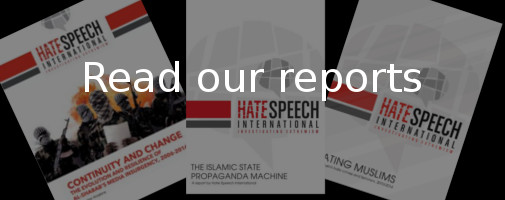
 Print Friendly
Print Friendly




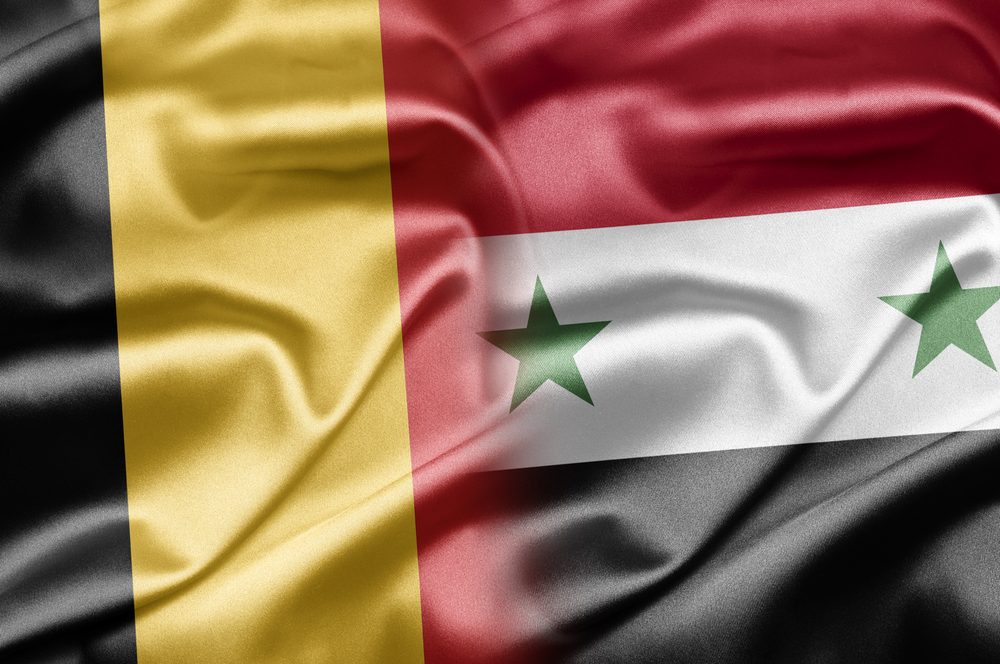
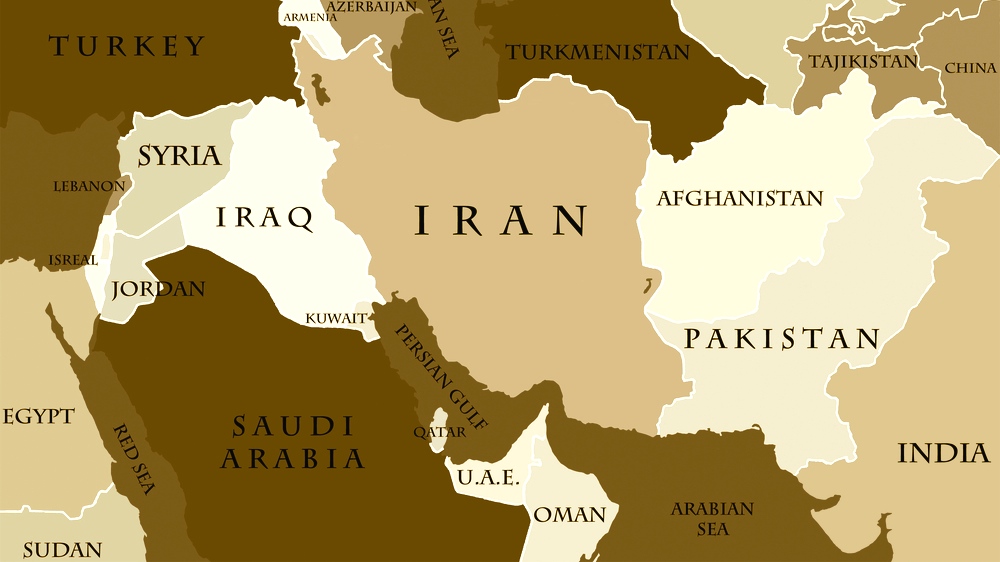
For us Brazilians this is a huge shame. Why this idiot joined the ISIS?